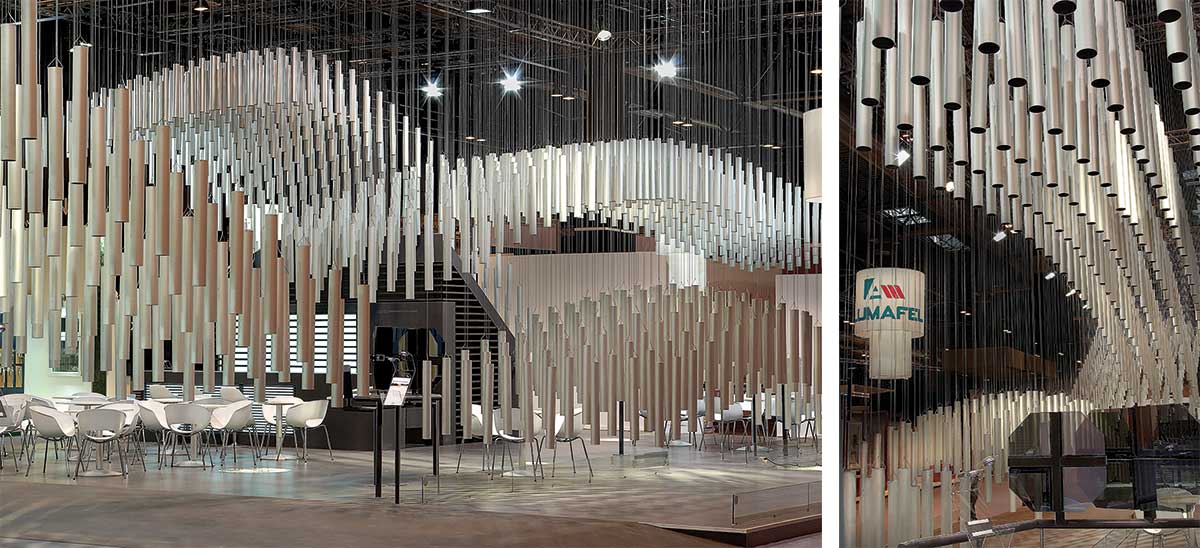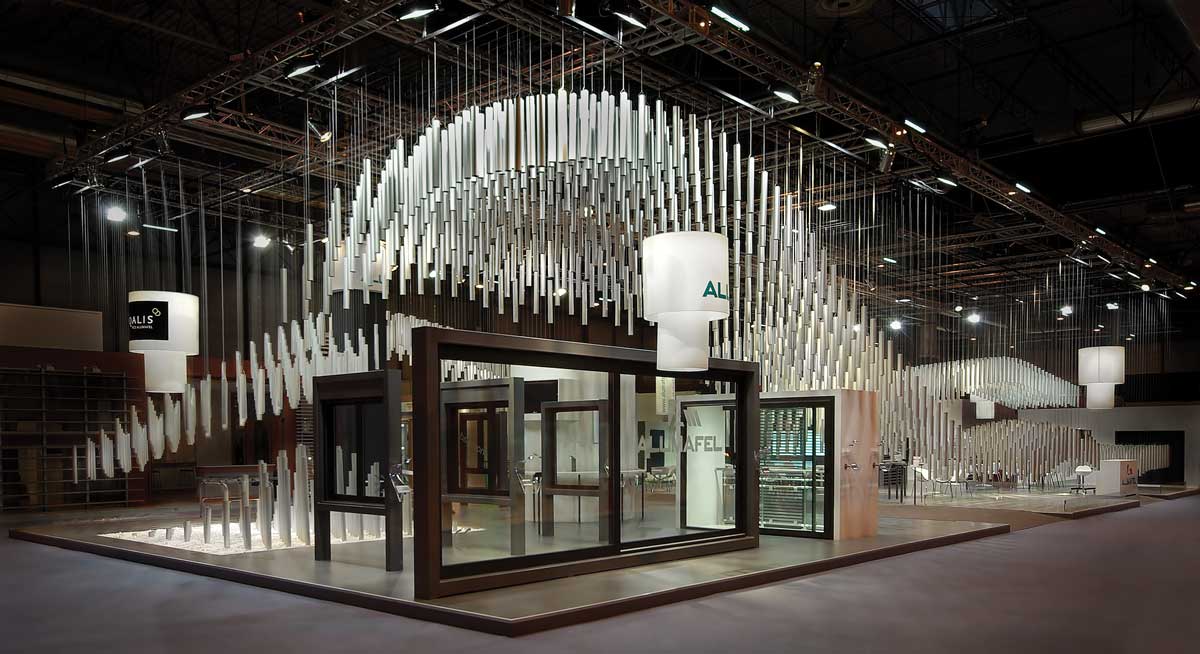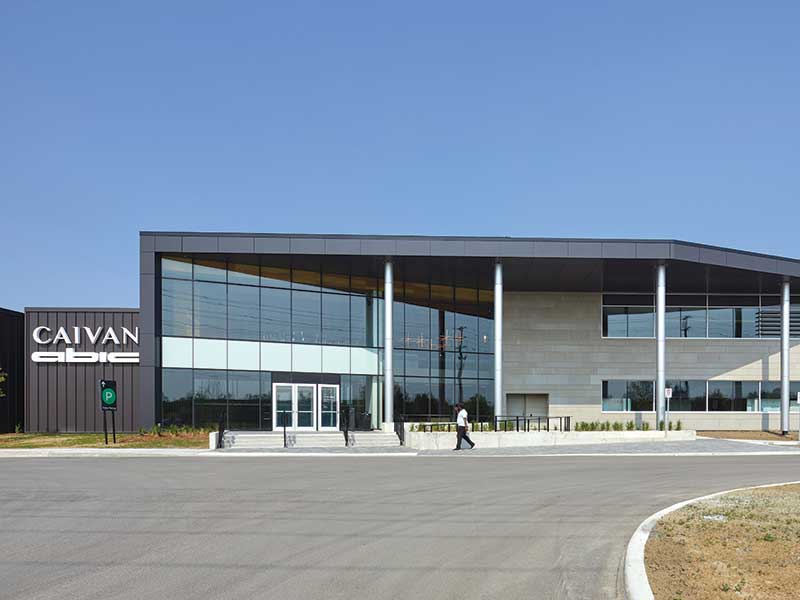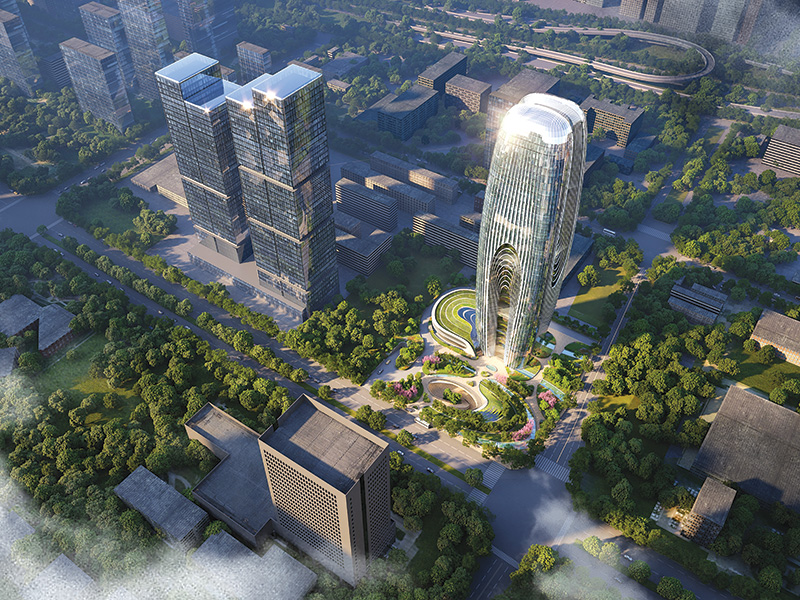This ephemeral architecture project is a exhibition pavilion for Alumafel S. A. which manufactures windows and carpentry elements made of aluminum including 1,933 aluminum cylinders suspended from a total of 4,523 meters of metallic wire.
The exhibited objects are arranged on the stand floor; the more important ones have a more prominent position and more free space around them. Each of these objects is surrounded by an imaginary bubble. The size of these bubbles is proportional to the importance of the object. Since the total available area is limited, some of these bubbles partially overlap, generating, in addition, paths that link the different areas together.

The materials come together to create the effect of an imaginary surface - a kind of continuous mantle suspended over the exposed objects. The geometry of this surface was reshaped because of the size of the bubbles. A series of ridges and valleys that oscillated according to the relevance of the exposed elements were outlined. This topography descends to lead the visitor to circulate around the exhibit and to highlight some points of view.
The problem that remained to be solved was to choose the appropriate material for the surface outlined by the software while maintaining a continuous pattern. During the design process, it had acquired a complex shape, one difficult to be built. Fortunately, a ready-made solution awaited at the company’s facilities. After visiting one of its warehouses, the team discovered some leftover cylindrical pieces waiting to be recycled. A decision was taken to use these pieces of aluminum to build a discontinuous evocation of a virtual and imaginary surface.

In just five days, the team suspended 1,933 aluminum cylinders using 4,523 meters of metallic wire with pinpoint accuracy. The surface was perceived despite the discontinuity of the recycled pieces of aluminum. Besides, the exhibition space of the pavilion was more permeable to the eye and was flooded by anodized reflections. All this generated an atmosphere of lightness and transparency that shrouded the exhibits. The different areas of the exhibition space are visually and physically connected to each other as part of a promenade.
Photo credit: María Llorens
Source: v2com









